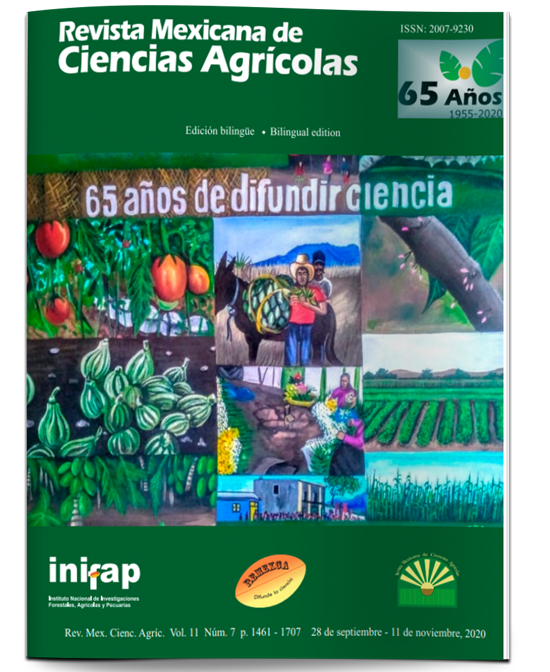The peasant disorganization of the corn growers of Huandacareo Michoacán: reasons and significance
DOI:
https://doi.org/10.29312/remexca.v11i7.2672Keywords:
associativity, economic organizations, productivityAbstract
Corn is the most researched cereal of agricultural products in Mexico. In the country, the crop is sown mainly under the temporary modality and in the spring-summer productive cycle. Corn (Zea mays L.) is an essential component of the diet of Mexicans, with an average per capita consumption of 120 kg, which is why it is important to observe the interconnections that exist between corn producers and how they have contributed significantly very important in the first instance to that of your family, community and regional scope. The research was carried out in the winter 2019-2020 in the municipality of Huandacareo, Michoacán. The objectives of this work was to analyze the problem of peasant economic organization; as well as show the costs of the precarious organization for the corn producer. 68 semi-structured interviews were conducted with conventional corn producers, which represented 100% of the sample. The results show that the problems of the existing peasant organizations are the client relationship, the short time of the producers, demagoguery, favoritism in the support, differences of interests and the smallholding. Likewise, the barriers that prevent the emergence of new organizations are the lack of resources and an organizational culture, envy, indisposed leaders, bad experiences from the past, incorrect public policy, little information and the search for short-term benefits. Indirect costs for the producer of the precarious organization are the purchase of expensive inputs, sale of products at market prices, little technical advice and a slow technology adoption process due to the scarce use of credit.
Downloads
Downloads
Published
How to Cite
Issue
Section
License
The authors who publish in Revista Mexicana de Ciencias Agrícolas accept the following conditions:
In accordance with copyright laws, Revista Mexicana de Ciencias Agrícolas recognizes and respects the authors’ moral right and ownership of property rights which will be transferred to the journal for dissemination in open access. Invariably, all the authors have to sign a letter of transfer of property rights and of originality of the article to Instituto Nacional de Investigaciones Forestales, Agrícolas y Pecuarias (INIFAP) [National Institute of Forestry, Agricultural and Livestock Research]. The author(s) must pay a fee for the reception of articles before proceeding to editorial review.
All the texts published by Revista Mexicana de Ciencias Agrícolas —with no exception— are distributed under a Creative Commons License Attribution-NonCommercial 4.0 International (CC BY-NC 4.0), which allows third parties to use the publication as long as the work’s authorship and its first publication in this journal are mentioned.
The author(s) can enter into independent and additional contractual agreements for the nonexclusive distribution of the version of the article published in Revista Mexicana de Ciencias Agrícolas (for example include it into an institutional repository or publish it in a book) as long as it is clearly and explicitly indicated that the work was published for the first time in Revista Mexicana de Ciencias Agrícolas.
For all the above, the authors shall send the Letter-transfer of Property Rights for the first publication duly filled in and signed by the author(s). This form must be sent as a PDF file to: revista_atm@yahoo.com.mx; cienciasagricola@inifap.gob.mx; remexca2017@gmail.
This work is licensed under a Creative Commons Attribution-Noncommercial 4.0 International license.



